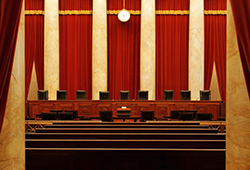 As we posted earlier this morning, the Supreme Court has invited the Solicitor General to file briefs regarding the Sandoz v. Amgen and Amgen v. Sandoz petitions for certiorari. Below we provide further analysis and commentary on the announcement, and an overview of what we can expect next.
As we posted earlier this morning, the Supreme Court has invited the Solicitor General to file briefs regarding the Sandoz v. Amgen and Amgen v. Sandoz petitions for certiorari. Below we provide further analysis and commentary on the announcement, and an overview of what we can expect next.
Analysis
The Court’s move indicates a substantial degree of interest in the case, even though this is the first BPCIA matter to come before the Justices. It takes the votes of several Justices to call for the SG’s views. Amgen urged the Court to wait for more “percolation” of these issues. The Court surely was aware that more biosimilars cases are in the pipeline. But rather than wait and see what happens in the lower courts, it asked the SG to weigh in. If the government were to agree that the questions presented by Sandoz (and, conditionally, by Amgen) are sufficiently foundational to the new regulatory framework for biosimilars that they should be resolved now, the government’s view would trump Amgen’s plea for more percolation. If, by contrast, the government agreed with Amgen that Supreme Court review would be premature, there is still some chance the Court might be sufficiently interested to grant review.
Sometimes a brief by the Solicitor General identifies case-specific aspects of a petition that make it a “poor vehicle” to decide the legal issues presented. We’ll have to wait and see if the Acting SG identifies any such “vehicle” issues in this case. Some of Amgen’s arguments in its brief in opposition are along those lines.
What happens next?
There is no time limit for the Acting Solicitor General (Ian Gershengorn, who will take over when Donald Verrilli leaves this week) to file his brief. At a minimum, this will postpone action by the Supreme Court until after it returns from its summer recess in September. The delay is likely to be longer, however, because the Acting Solicitor General may not file his brief until well into the fall. Before filing a brief, the Acting SG will consult with the parties, as well as with interested components within the government, such as the FDA.
The Acting SG will make a recommendation to the Court about both the petition and the conditional cross-petition. The government’s brief would be expected to express a view about whether the Federal Circuit decided each of the questions presented correctly, and separately, whether the Supreme Court should grant certiorari on any of those questions. The “merits” and “certworthiness” analyses are distinct; for example, the government sometimes files a brief saying that a court of appeals has decided an issue wrongly but that the issue does not warrant Supreme Court review.
After the Acting SG files his brief, the parties will have approximately two weeks to respond in short supplemental briefs. The Court will consider the case again about four weeks after that. We will provide the specific dates for consideration as soon as the Acting SG files his brief.
If the Acting SG recommends that the Court grant cert on one or more questions presented by the petitions, it is extremely likely – indeed, virtually certain – that the Court will follow that recommendation and grant at least the questions on which he supports review. If he recommends denying cert, the Court may still grant review.
At a minimum, Sandoz’s chances of obtaining Supreme Court review have just increased materially.
